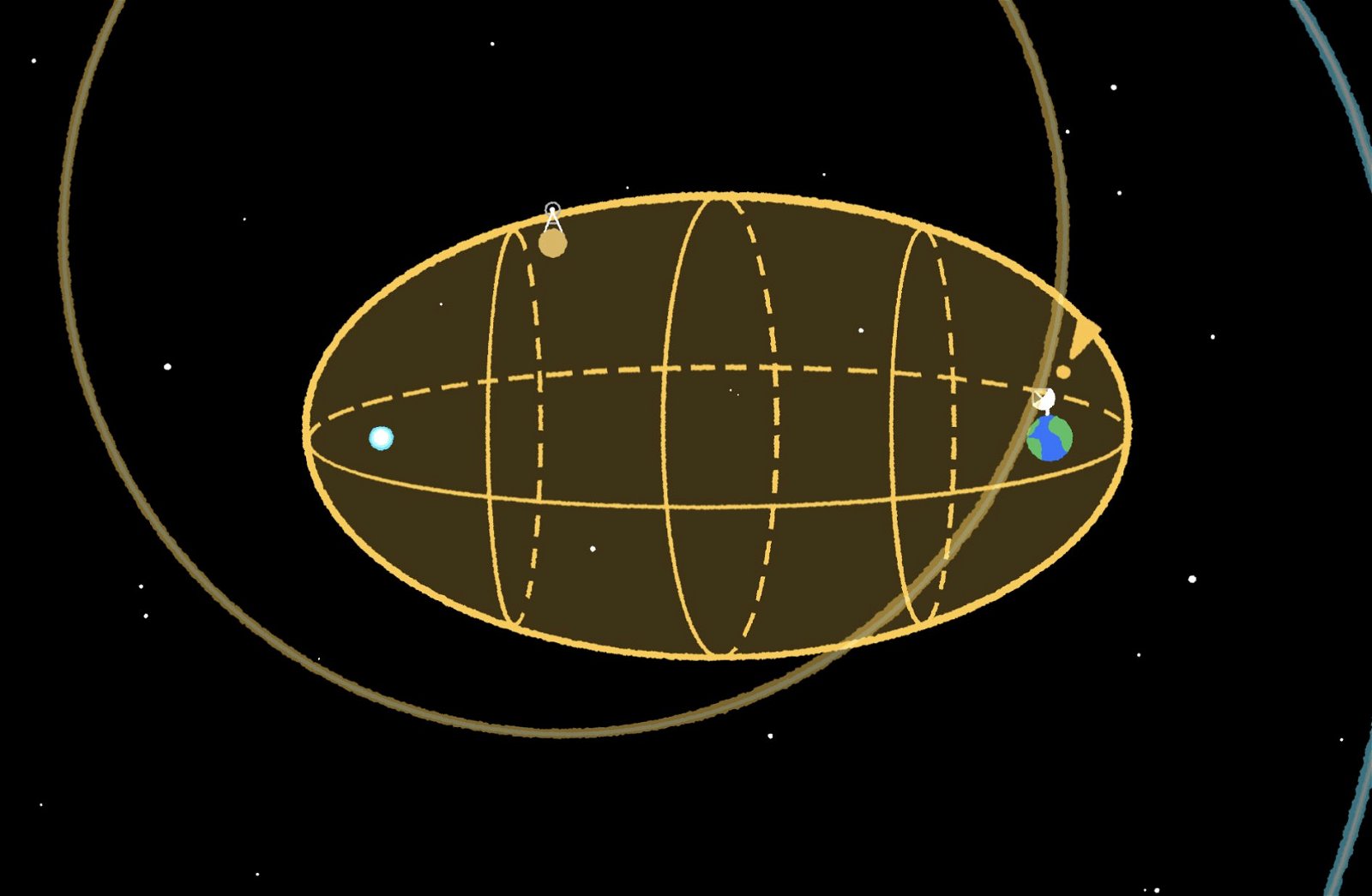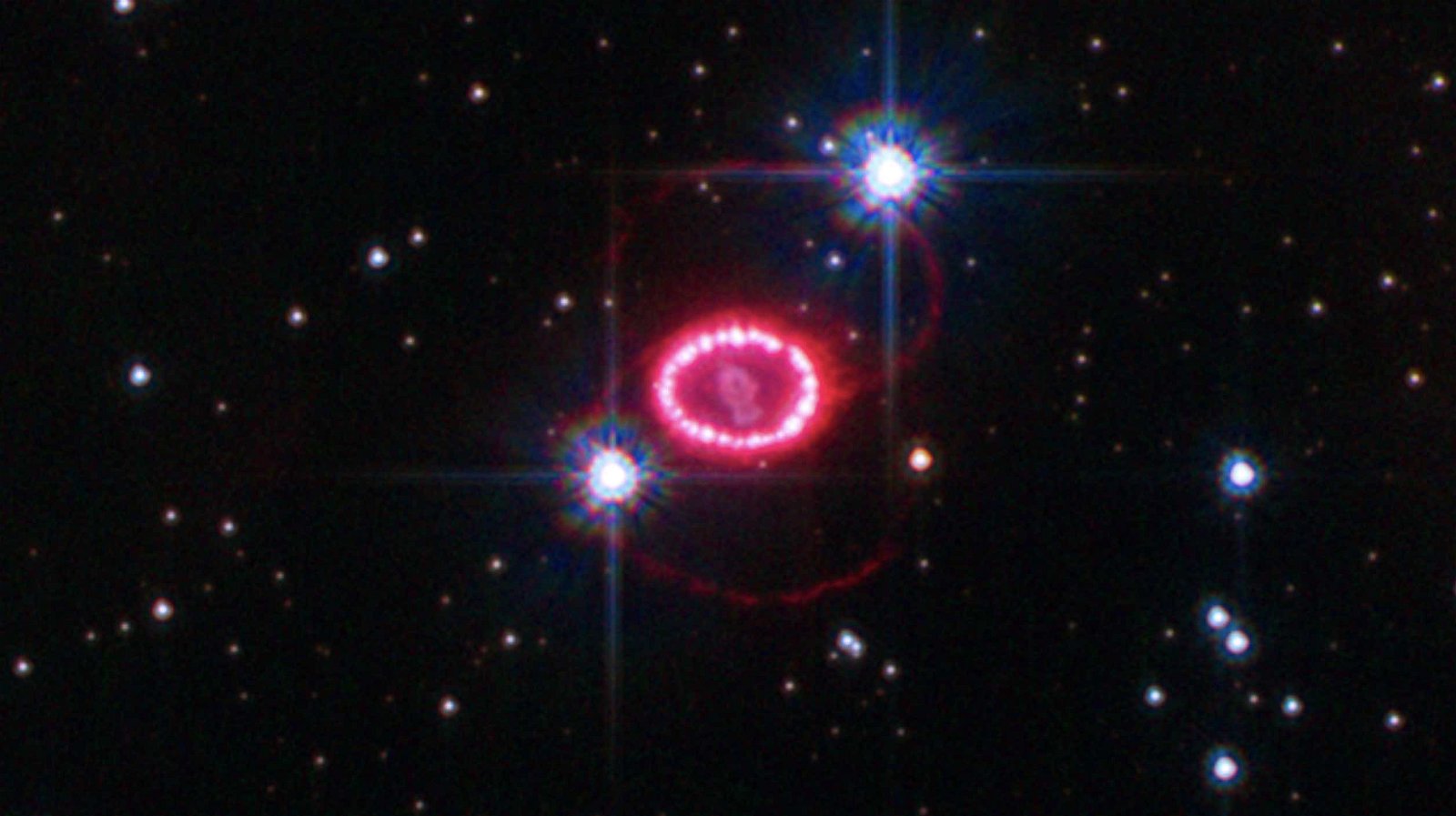A strategic approach for selecting promising targets for signs of advanced civilizations could move SETI researchers one step closer to discovering intelligence elsewhere in the cosmos.
The method relies on observations from the Transiting Exoplanet Survey Satellite (TESS) mission to observe what is known as the SETI Ellipsoid, and is outlined in a new study by researchers with the SETI Institute, along with colleagues at Berkeley SETI Research Center and the University of Washington.
A geometric strategy that selects potential technosignature observations, the SETI Ellipsoid describes an egg-shaped area of the cosmos where intelligent civilizations would likely have had enough time to witness an astronomical event.
Specifically, it works off the assumption that any potential extraterrestrial civilizations that may have witnessed such galactic-scale events may use them as a cosmic Schelling point—a solution chosen by parties under conditions where they can’t otherwise communicate—which may be manipulated to broadcast synchronized signals through space to indicate their presence.
An example of such a galactic-scale event might be supernova 1987A, light from which was first observed by astronomers as it reached Earth on February 23, 1987. According to the authors of the new study, ongoing and continuous wide-field sky surveys present astronomers with an excellent opportunity to scour the cosmos for signals like these.


Bárbara Cabrales, one of the study’s co-authors, said that new wide-scale surveys of the sky offer astronomers “groundbreaking opportunities to search for technosignatures coordinated with supernovae.”
“The typical timing uncertainties involved are of a couple months,” Cabrales said in a statement, “so we want to cover our bases by finding targets that are well-documented over the course of about a year.
“In addition to that, it’s important to have as many observations as possible for each target of interest, so that we can determine what looks like normal behavior and what might look like a potential technosignature.”
In their research, the Cabrales and the team examined sources in the TESS continuous viewing zone, accounting for around 5% of the available TESS data, based on observations made during the first three years of the mission.
The Transiting Exoplanet Survey Satellite (TESS) was built and designed specifically to search for exoplanets, and since its launch in 2018 has covered an area 400 times the size of the earlier Kepler mission. According to the new study’s authors, by using improved three-dimensional locations for stars obtained from Gaia Early Data Release 3, a total of 32 SN 1987A SETI Ellipsoid targets were identified in the TESS continuous viewing zone.
“We examined the TESS light curves of these stars during the Ellipsoid crossing event and found no anomalous signatures,” the study’s authors write.
Although no anomalies were detected during the team’s observations, the methodology they applied is nonetheless promising and offers potentially promising approaches that have applications within the scope of other sky surveys and across an array of different targets and signal types.
The technique, they say, might also be applied to large amounts of data that exist in archival databases, which could mean that the kinds of promising technosignatures that astronomers hope to find could already be present in the existing data they have collected, not unlike fossil recoveries that are collected and preserved in a museum for years before they are eventually identified as a novel species.
Of key importance is that the study showcases how leveraging Gaia’s high precision distance estimates helps demonstrate how astronomers can compare these distances alongside data from time-domain surveys like TESS, thereby allowing them to improve their overall chances of monitoring and detecting anomalies.
By combining distance measurements from the Gaia catalog with the SETI Ellipsoid method for anomaly detection, researchers can search through large amounts of archival data either to look for potential signals or to select targets for future searches.
“This work is the first step in searching those newly-highlighted parts of parameter space, and is an exciting precedent for upcoming large survey projects,” said co-author Dr. Sofia Sheikh, who cited as an example the Vera C. Rubin Observatory, previously known as the Large Synoptic Survey Telescope, which is currently under construction in Chile, which will engage in a massive synoptic astronomical survey called the Legacy Survey of Space and Time once it is complete.
The team’s new paper, “Searching the SN 1987A SETI Ellipsoid with TESS,” was published in The Astronomical Journal on February 12, 2024.
Micah Hanks is the Editor-in-Chief and Co-Founder of The Debrief. He can be reached by email at micah@thedebrief.org. Follow his work at micahhanks.com and on X: @MicahHanks.

